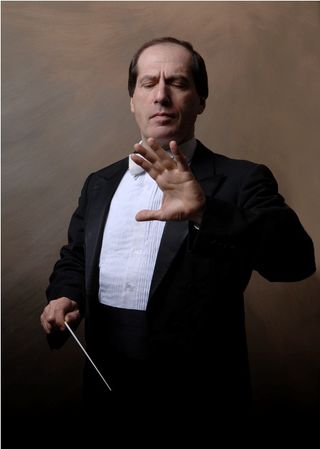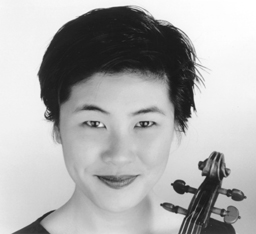Big and brawny, Moscow State Symphony’s playing is Russian to the bone

Pavel Kogan led the Moscow State Symphony Monday night at the Arsht Center.
Attempting to detect national characteristics in symphony orchestras can be a waste of time. Not every Viennese orchestra is elegant and not every German one weighty.
But there was something distinctly Russian— big, strapping, and unsubtle—about the Moscow State Symphony Orchestra, which performed Monday at the Arsht Center for the Performing Arts in Miami, drawing a sizable contingent of Russian-speaking listeners to the concert.
The orchestra, founded in 1943 and conducted by Pavel Kogan, son of the famous violinist Leonid Kogan, is clearly full of virtuoso players. Yet it doesn’t place a premium on finesse, preferring brute force, sizzling tempos and sheer momentum to carry it through the evening’s program.
Tchaikovsky’s Capriccio Italien, which opened the concert, was taken at almost comically high speed. With thumping drums, powerful but accurate blasts in the brass, and violins playing so fast that the notes became a blur, the orchestra brought an unusual level of power and brilliance to this familiar showpiece.
Few composers took better advantage of the violin’s capabilities than the 19th century German composer Max Bruch, whose Violin Concerto No. 1 revels in the instrument’s ability to produce chords, arpeggios and soaring melodies.

Jennifer Koh
Jennifer Koh, more of a specialist in contemporary music than Romantic warhorses, joined the orchestra for a highly personal and highly uneven performance of this fiddle warhorse. The young American violinist tackled the first movement in a rushed manner that robbed it of much of its dignity and drama, not allowing time to let the music breathe and progress at its own pace. Her uniformly intense style, with the bow usually applied at maximum pressure, brought little warmth to the second movement, the lyrical heart of this concerto. Only in the last movement did her hyper-energetic style match the music.
When a Russian orchestra comes to town, you expect them to serve up something characteristically Russian, and the Moscow ensemble did so with Mussorgsky’s Pictures at an Exhibition, in the familiar orchestration by Maurice Ravel. Although the first half of the concert displayed the orchestra’s weight, power and momentum, this one showed off all sides of the ensemble.
In the Old Castle section, fine performances on saxophone and other wind created an atmosphere of mystery. Strings played with a shimmering softness that shrouded the section in fog, as Kogan urged them to play ever softer with that apparently universal podium gesture of a finger to the lips. In the Catacombs portrait, brass played with a deep-hued, choral balance.
Violins played brilliantly throughout, with a spidery insinuation in The Hut on Fowl’s Legs, and virtuoso brilliance in the rapid passage leading up to the restatement of the main theme. The Great Gate of Kiev—with cymbals and clanging bells—was played with a stately grandeur that brought the work to a powerful conclusion.
The audience responded with a standing ovation, bringing Kogan out for curtain call after curtain call. He obliged them with two encores by Dvořák, the Humoresque and Slavonic Dance No. 9.
The Moscow State Symphony Orchestra repeats the program 8 p.m. Tuesday at the Kravis Center for the Performing Arts in West Palm Beach. The orchestra also performs 2 p.m. Wednesday at the Kravis Center with pianist Jeremy Denk in Prokofiev’s Piano Concerto No. 2, as well as Mendelssohn’s Scottish Symphony and Ravel’s La Valse. kravis.org; 800-572-8471.
Posted in Performances
Leave a Comment
Tue Nov 16, 2010
at 11:11 am
No Comments






